February 2019
February 18, 2019
The Burnt Food Museum
It was founded in the late 1980's by harpist Deborah Henson-Conant. She writes:The museum still seems to be going strong, though its website specifies that it's a private museum, which means that you need to arrange personal tours in advance to see it. A price of $3500 is quoted. For that amount, I'm sure Paul and I could arrange something if you wanted a behind-the-scenes tour of WU.



Boston Globe - May 13, 2001
Posted By: Alex - Mon Feb 18, 2019 -
Comments (1)
Category: Food, Strange Websites
Alfred Latell, Animal Impersonator
Learn more about him from Pam Deitch at her blog.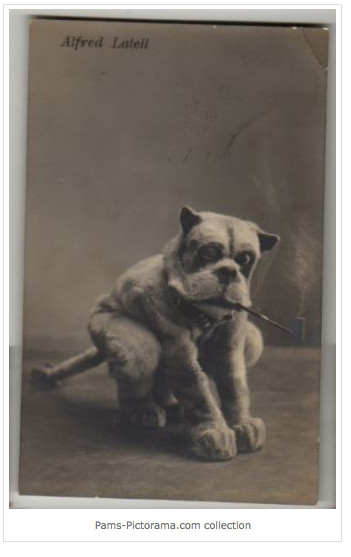
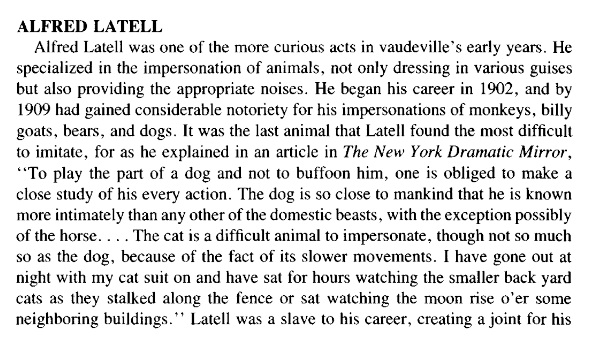

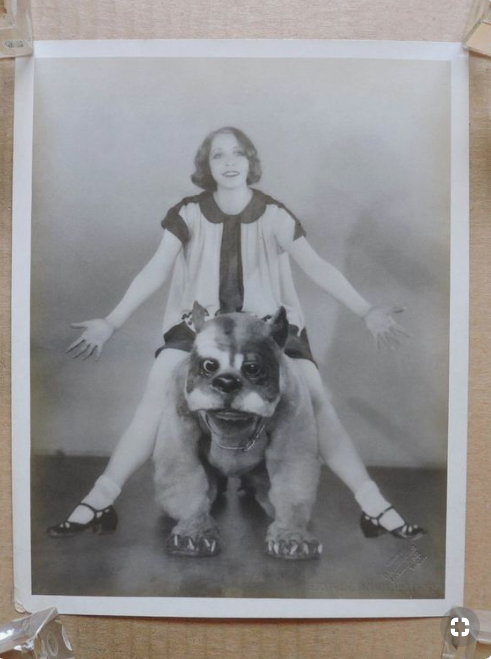
Posted By: Paul - Mon Feb 18, 2019 -
Comments (0)
Category: Animals, Anthropomorphism, Costumes and Masks, Entertainment, Movies, Twentieth Century
February 17, 2019
The Anthem of California
I've lived in California for 26 years, and just learned that we have a state anthem. Lyrics by Francis Beatty Silverwood and music by Abraham Frankenstein. More details: wikipedia.
Posted By: Alex - Sun Feb 17, 2019 -
Comments (2)
Category: Music
Follies of the Madmen #413
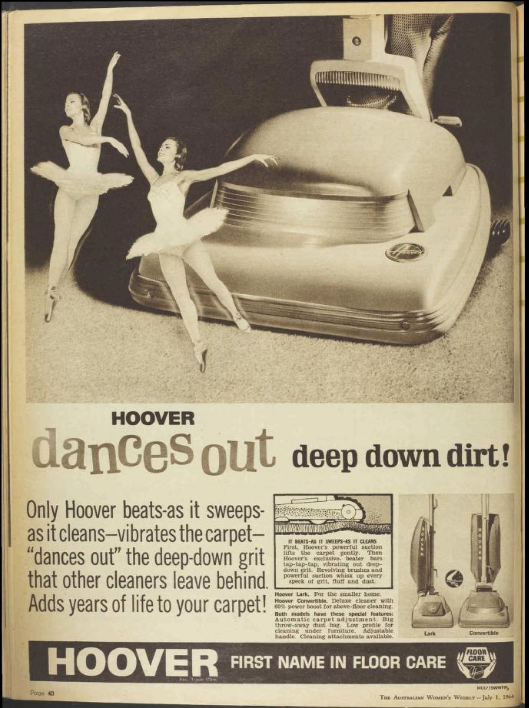
Thousands of microscopic ballerina feet beat your carpet clean.
Source.
Posted By: Paul - Sun Feb 17, 2019 -
Comments (2)
Category: Business, Advertising, Surrealism, Appliances, 1960s
February 16, 2019
The Check Out Suite
The Hotel Bellora in Gothenberg, Sweden has introduced what it calls the 'check out suite'. The price of staying in this room is proportional to how much time you spend online while there. The cost rises the more you use the Internet. Also, a lamp in the room changes color from white to red as your Internet usage increases. If the lamp changes fully to red, you've got to pay full price for the room.The goal is to encourage occupants of the room to have more real-world interactions with people. But if so, why limit it to Internet usage? What about docking them for time spent watching TV as well?
More details: adweek.com

Posted By: Alex - Sat Feb 16, 2019 -
Comments (2)
Category: Internet, Hotels
The Unimog
This one has been turned into a camper.


Posted By: Paul - Sat Feb 16, 2019 -
Comments (3)
Category: Motor Vehicles
February 15, 2019
Frozen Sections of a Child
Back in 1881, Dr. Thomas Dwight of Harvard Medical School authored Frozen Sections of a Child, which sounds like the kind of book one might find in the library of a serial killer. As the title indicated, the book consisted of anatomical illustrations of frozen cross-sections of a three-year-old child.In the preface, Dwight helpfully included advice for those readers who might want to create their own frozen sections of a child:
More details: Harvard's Countway Library. You can also read the full book online via Google Books.

Posted By: Alex - Fri Feb 15, 2019 -
Comments (0)
Category: Body, Surgery, Books, Nineteenth Century
Disk-O-Tek Holiday
IMDB entry.
Posted By: Paul - Fri Feb 15, 2019 -
Comments (0)
Category: Movies, Music, Bohemians, Beatniks, Hippies and Slackers, 1960s
February 14, 2019
Knee Reading
Toni Lockhart, aka Gypsy Rose Knee, pioneered the art of knee reading. She detailed her technique in her 1975 book Gypsy's Basic Knee Reader. A few pointers:A new mole may indicate that the person’s life and profession are on the upswing.
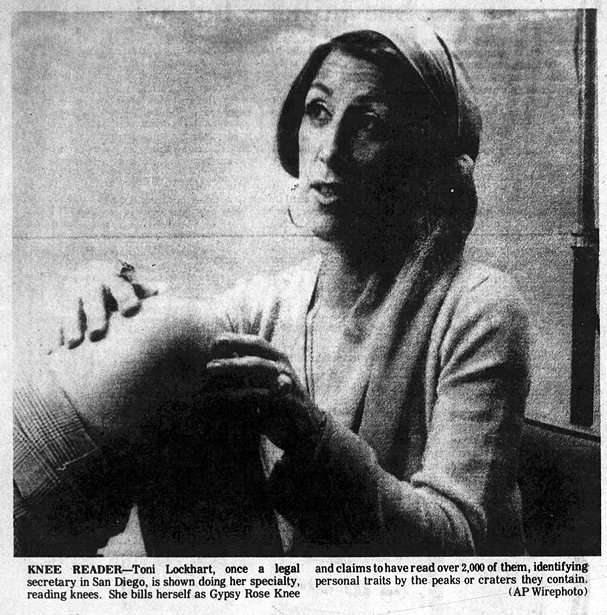
Manhattan Mercury - Aug 8, 1975
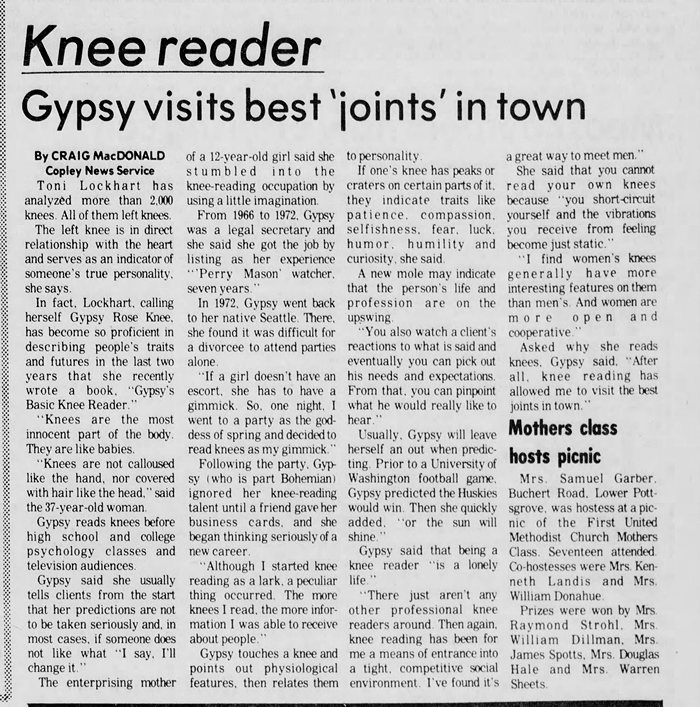
The Pottstown Mercury - Aug 19, 1975 (click to enlarge)
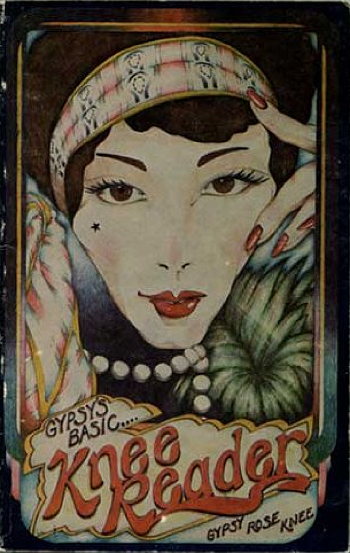
Posted By: Alex - Thu Feb 14, 2019 -
Comments (2)
Category: Predictions, 1970s
Prince Leonard Casley, RIP
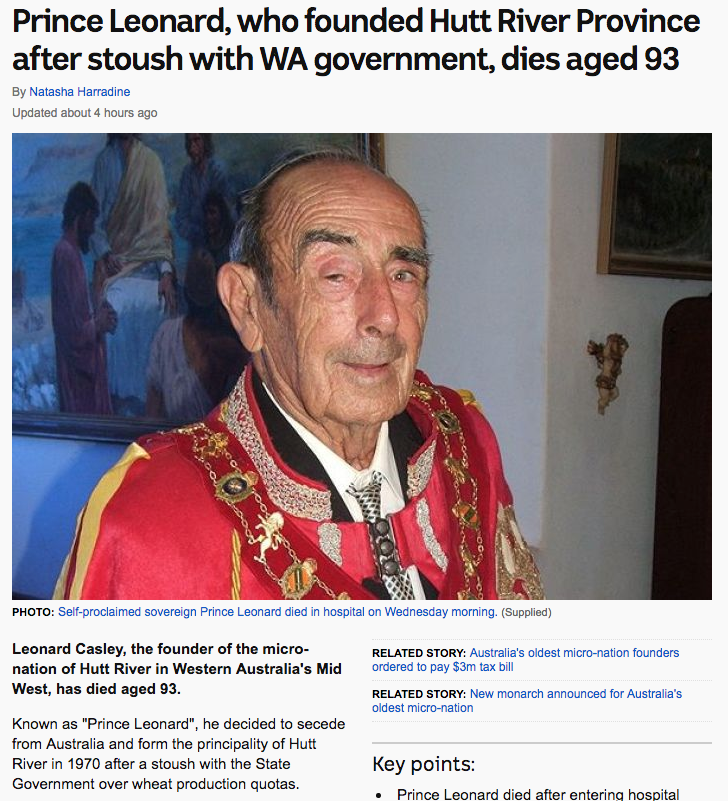
Full article here.
Wikipedia page.
Posted By: Paul - Thu Feb 14, 2019 -
Comments (0)
Category: Eccentrics, Curmudgeons and Contrarianism, Government, Unauthorized Dwellings, Outsider Art, Performance Art, Foreign Customs, Obituaries, 1970s
| Get WU Posts by Email | |
|---|---|

| Who We Are |
|---|
| Alex Boese Alex is the creator and curator of the Museum of Hoaxes. He's also the author of various weird, non-fiction books such as Elephants on Acid. Paul Di Filippo Paul has been paid to put weird ideas into fictional form for over thirty years, in his career as a noted science fiction writer. He has recently begun blogging on many curious topics with three fellow writers at The Inferior 4+1. Chuck Shepherd Chuck is the purveyor of News of the Weird, the syndicated column which for decades has set the gold-standard for reporting on oddities and the bizarre. Our banner was drawn by the legendary underground cartoonist Rick Altergott. Contact Us |

